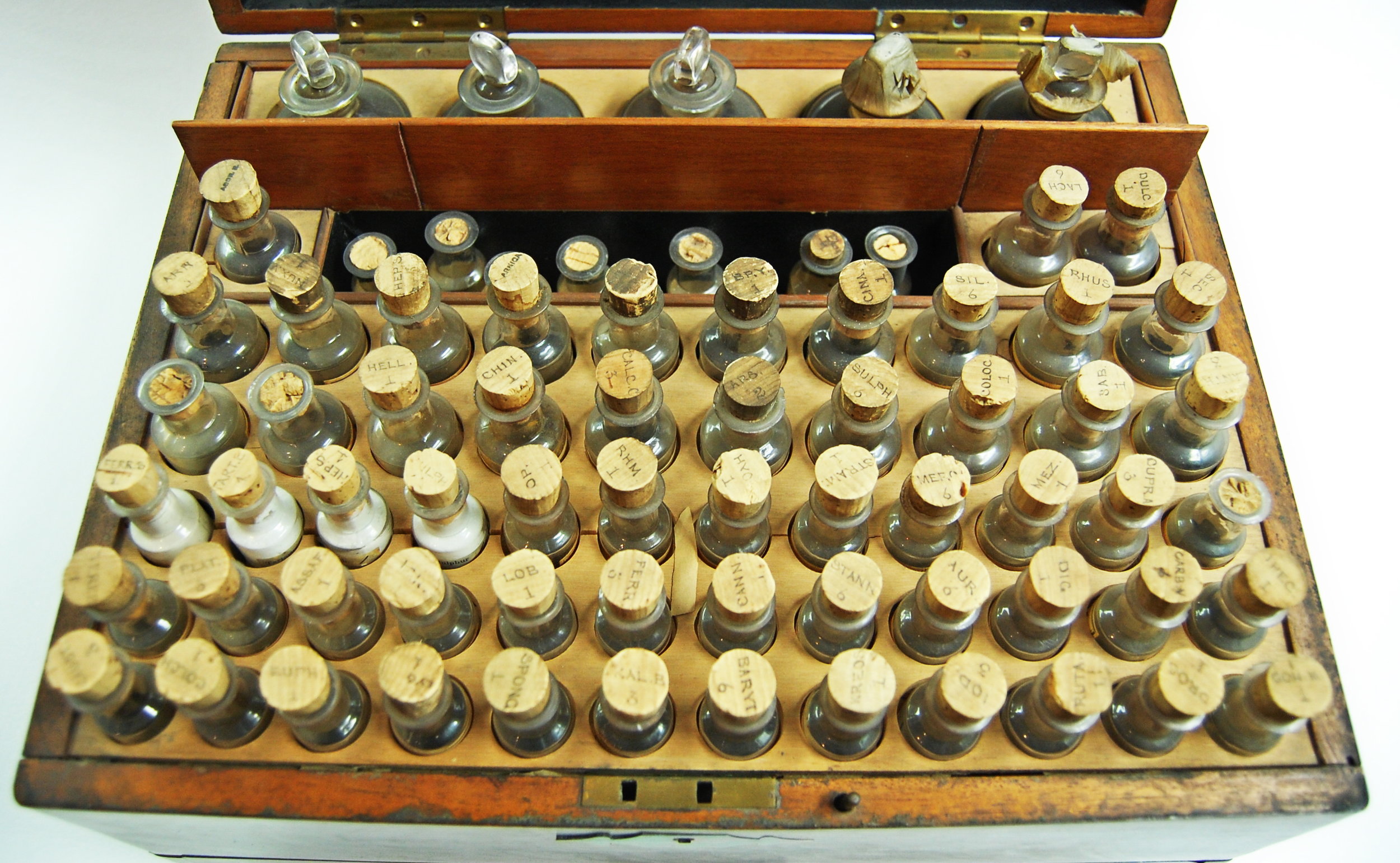



Pictured opposite are a homeopathy kit and a veterinary homeopathy kit. The veterinary kit dates to around 1860 and was made by James Moore. It was obtained from the auction sale of the Earl of Dudley’s estate and includes 24 glass bottles. The homeopathy kit for human use was produced by Thomson and Capper, Liverpool.
Homeopathy is based on the ideas developed in the 1790s by a German doctor called Samuel Hahnemann. A central principle of the treatment is that a substance that causes certain symptoms can also help to remove those symptoms. A second central principle is based around a process of dilution and shaking. The more diluted, the greater its power to treat symptoms.
Today it is used for a wide variety of conditions including asthma and depression and is offered as a treatment by two NHS hospitals and a few General Practitioners. It is more widely available at pharmacies and privately. The effects of homeopathy medicines are often compared to those of placebo medicines.
Homeopathy medicines were used for both animals and human and were collected in these boxes.
These Homeopathy Kits are on display in the Drugs and Pharmacology display case at the George Marshall Medical Museum.